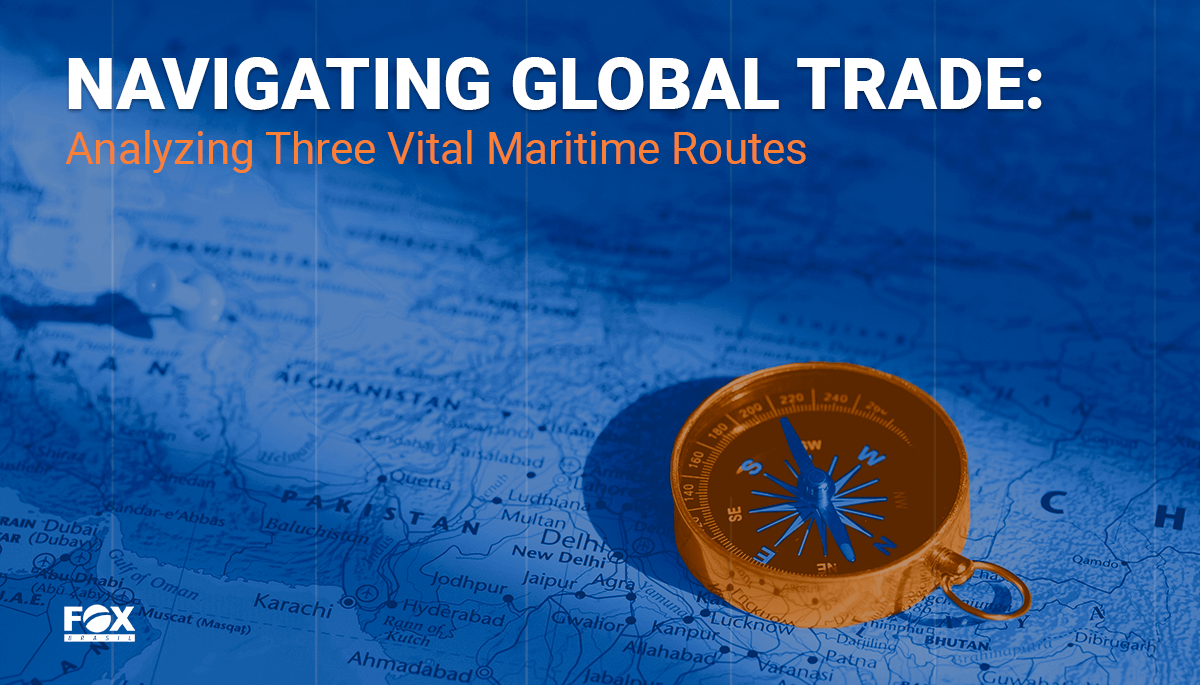Navigating Global Trade: Analyzing Three Vital Maritime Routes

Understand Logistics & Freight
International trade forms the backbone of the global economy, and maritime routes are the vital channels that facilitate the movement of goods across continents and oceans. Within the spectrum of international trade, three distinct maritime routes stand out: the round-the-world route, the port-to-port route, and the pendulum route. In this blog post, we will explore how these routes contribute to the intricate web of international commerce, enabling the seamless flow of goods, resources, and prosperity.
Round-the-World Route: Uniting Diverse Markets
The round-the-world route symbolizes the epitome of globalization, connecting distant markets and cultures on an epic journey. This route involves circumnavigating the entire globe, traversing multiple oceans and continents. Historically, explorers embarked on these ambitious voyages to chart uncharted territories and establish trade routes.
In the context of international trade, the round-the-world route still plays a crucial role. Cargo vessels transport goods on this route, allowing products from one region to reach consumers on the opposite side of the world. This route enables businesses to tap into markets they might not otherwise access and ensures a diverse range of products are available globally. It also showcases the interconnectedness of economies, as products and raw materials from one corner of the world find their way to another, fostering economic interdependence.
Port-to-Port Route: Backbone of Global Commerce
The port-to-port route serves as the workhorse of international trade, facilitating the movement of goods between major commercial centers. This route involves shipping goods from one specific port to another, often along established shipping lanes. Container ships, bulk carriers, and other vessels operate on this route, efficiently transporting products from manufacturing locations to consumer markets.
Efficiency is the hallmark of the port-to-port route. By connecting key ports, it optimizes transportation, minimizes transit times, and ensures a steady flow of goods. For example, the trade between Asian manufacturing powerhouses and consumer markets in North America and Europe heavily relies on the efficiency of these routes. The port-to-port route underscores the critical importance of reliable logistics in maintaining a robust global supply chain.
Pendulum Route: Balancing Seasonal Demands
The pendulum route, also known as the backhaul route, demonstrates adaptability in response to changing seasonal demands. This route involves ships moving between two regions experiencing opposite peak seasons. For instance, ships might carry goods from the Northern Hemisphere to the Southern Hemisphere during one season and return with products from the Southern Hemisphere during another.
The pendulum route plays a pivotal role in maintaining a balanced trade flow throughout the year. It enables vessels to optimize their capacity utilization by transporting goods in both directions, ensuring that empty ships do not return after delivering goods. This route is particularly crucial in industries that experience seasonal variations, such as agriculture, where harvest times differ between hemispheres.
Maritime routes are the lifeblood of international trade, allowing goods to flow freely across the world’s oceans and connecting economies on a global scale. The round-the-world route embraces the spirit of exploration and unity, while the port-to-port route efficiently links major commercial centers. The pendulum route showcases adaptability in response to changing demand patterns. Together, these routes form a complex network that powers international commerce, highlighting the interdependence of economies and the boundless opportunities that arise from interconnected markets.